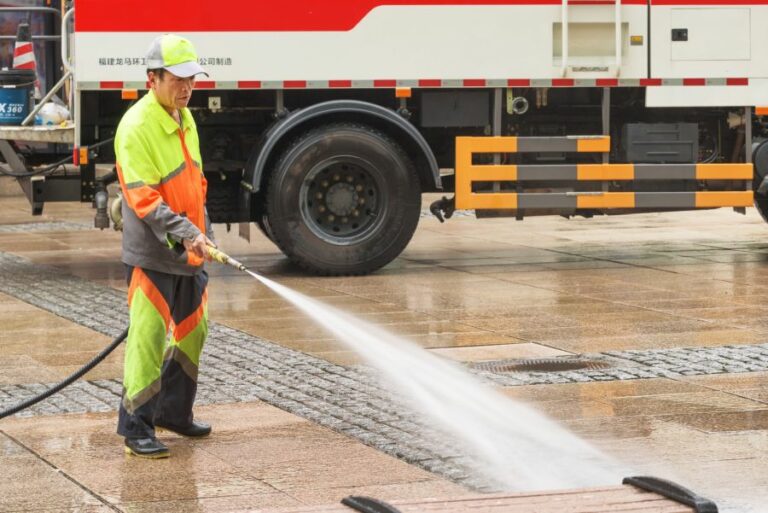Restore Surfaces With Crack Fillers, 25 Things You Should Know
Cracks in surfaces can be an eyesore and, if left untreated, can lead to further damage. We have just the solution for you to restore those surfaces and have them look as good as new! With our expertise and the right crack fillers, we’ll guide you through the process to achieve seamless, long-lasting results.
Restore surfaces with crack fillers:
Crack fillers are essential tools for maintaining surfaces such as concrete, wood, and asphalt by sealing gaps, cracks, and holes. They prevent water intrusion and damage and prolong the surface’s lifespan. Select the appropriate filler for your surface (cementitious, epoxy, polyurethane, cold pour, hot pour, solvent-based, or water-based), prepare the surface, and follow the manufacturer’s application instructions for the best results. Regular inspection and maintenance can further extend the life of the repair.

Discover the wonders of crack fillers and unveil the secrets to making surfaces look new again! Learn about various types and methods that ensure longevity and durability. Keep reading and revamp your restoration game like never before!
Contents
Repair Surface Cracks with High-Quality Fillers
In maintaining various surfaces, such as concrete, wood, or asphalt, crack fillers are essential tools that provide long-lasting and effective repair.
• The Importance of Crack Fillers
Crack fillers play a pivotal role in restoring surfaces by sealing gaps, cracks, and holes. This prevents water intrusion, which can cause significant damage like erosion, ice formation, or further cracking.
By using the appropriate crack filler, you can maintain the aesthetics and functionality of surfaces, prolong their lifespan, and avoid costly repairs in the future.
– For Concrete Surfaces
Concrete surfaces, such as driveways, sidewalks, and patios, are susceptible to cracking due to various factors, including weather conditions, settling, and heavy usage.
It’s essential to attend to these cracks as soon as possible since they can undermine structural integrity, create trip hazards, and negatively affect curb appeal.
– For Asphalt Surfaces
Asphalt surfaces, like parking lots or roads, are prone to develop cracks due to exposure to sun, moisture, and heavy traffic. Regular use of crack fillers helps prevent potholes or further deterioration, ensuring a smooth and safe driving experience.
– For Wooden Surfaces
Wooden surfaces, like decks or floors, might develop cracks or splits over time. Filling these gaps ensures that the wood remains strong and prevents moisture or insects from penetrating, prolonging the life of the wooden structure.
• Choosing the Right Crack Filler
Selecting the appropriate crack filler for your surface is essential to achieve optimal results. The following are some common types of crack fillers and their recommended uses:
– Concrete Crack Fillers
For concrete surfaces, consider using cementitious, epoxy, or polyurethane-based crack fillers.
Cementitious fillers are affordable, easy to apply, and ideal for small or shallow cracks. Epoxy and polyurethane fillers offer excellent adhesion, flexibility, and durability, which are best suited for larger or deeper cracks.
– Asphalt Crack Fillers
Asphalt crack fillers typically come in two forms: cold pour and hot pour. Cold pour fillers are cost-effective and easy to apply, making them suitable for homeowners seeking a DIY solution.
Hot pour fillers require specialized equipment for heating and application but provide longer-lasting and more resilient results, typically used by professionals for larger paving projects.
– Wood Crack Fillers
For wooden surfaces, choose between solvent-based and water-based wood fillers. Solvent-based fillers offer good adhesion and flexibility, making them ideal for exterior applications. Water-based fillers clean up easily and dry faster, suitable for interior wooden surfaces.
• Application Techniques for Crack Fillers
Achieving the best results when applying crack fillers requires following some basic guidelines and techniques, which can drastically improve the final outcome.
– Surface Preparation
Clean the surface by removing loose materials, dirt, or vegetation from the crack. For concrete and asphalt applications, use a wire brush, chisel, or power tool like a crack cleaner. For wood, sand the surface around the crack to ensure proper adhesion.
– Application Procedure
Follow the manufacturer’s instructions regarding the mixing and application process. Some products might require heating or mixing with additional components before application. Use appropriate tools, such as caulking guns, putty knives, or trowels, to ensure a smooth and even application.
– Finishing and Curing
Immediately smooth the surface of the applied crack filler using a trowel or putty knife. This creates a level surface and visually blends the filler with the surrounding area. Allow the applied crack filler to cure completely before subjecting the surface to any load or heavy use.
– Weather Considerations
When working outdoors, consider the climate and weather conditions, as they can affect the performance of crack fillers. Avoid applying the filler during rainy or freezing conditions, as this might cause the material to fail or crack.
• Crack Filler Maintenance Tips
After the application of crack fillers, following some basic maintenance practices will help extend the lifespan and efficacy of the repair.
- Inspect the surface periodically for signs of new cracks and promptly address them.
- Clean the surfaces regularly, with special care on asphalt surfaces, as the buildup of dirt can collect water and contribute to cracking.
- Apply sealants or coatings to protect the filled cracks and overall surface from water intrusion, further deterioration, or staining.
• Conclusion
Crack fillers are a cost-effective and efficient solution for restoring surfaces and prolonging their lifespan.
By selecting the appropriate product, ensuring proper surface preparation and application, and following the provided maintenance tips, you can enjoy a functional and visually pleasing surface for years to come.







